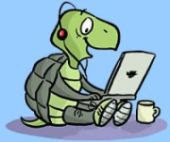 Having a Slow Internet Connection? Isn't it irritating when suddenly one day your Internet is slowing down or loading slowly. And you have already called your Internet Service Provider (ISP) and and they said that they have already checked your internet connection on there side and it is perfectly fine.
Having a Slow Internet Connection? Isn't it irritating when suddenly one day your Internet is slowing down or loading slowly. And you have already called your Internet Service Provider (ISP) and and they said that they have already checked your internet connection on there side and it is perfectly fine.Here are some Computer Tips on Slow Internet Connection that you can try before calling them:
1. Delete cookie files.
a. From the Start menu, click Internet Explorer.
b. On the toolbar, click Tools, and then click Delete Browsing History.
c. In the Delete Browsing History dialog box, click Delete Cookies.
d. In the Delete Cookies dialog box, click Yes.
2. Clear History files.
a. From the Start menu, click Internet Explorer.
b. On the toolbar, click Tools, and then click Delete Browsing History.
c. In the Delete Browsing History dialog box, click Delete History.
d. In the Internet Options dialog box, click Yes.
3. Delete Temporary Internet files.
a. From the Start menu, click Internet Explorer.
b. On the toolbar, click Tools, and then click Delete Browsing History.
c. In the Delete Browsing History dialog box, click Delete Files.
d. In the Delete Files dialog box, click Yes.
Note: You may complete all of the above steps, plus delete form data and Internet passwords, by clicking the Delete all button in the Delete Browsing History dialog box.
4. Reset Internet Explorer to the default settings.
a. In Internet Explorer, click Tools, and then click Internet Options.
b. Click the Advanced tab, and then click Reset.
c. Click Reset, and then click Close.
d. Click OK twice, and then close Internet Explorer.
e. Re-open Internet Explorer, and then try to browse the Internet.
5. Run and Update your anti-virus and anti-Spyware. Being online in the Internet could make your computer vulnerable to viruses and spywares online so make sure that your anti-virus and anti-spyware is always updated and run them always.
6. If using a dial-up connection, open Device Manager and update modem drivers.
This Computer Tips on Slow Internet Connection is I think the some simplest steps and maybe most of us who are technically inclined knows this steps but based on my experience some of us forgot this basic steps. I do hope this steps would be helpful to all of you.









